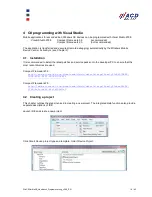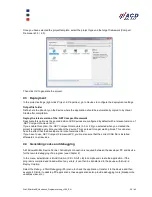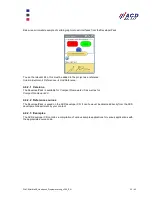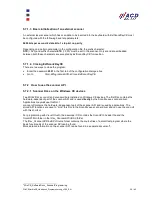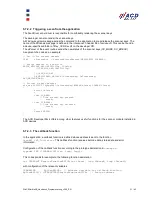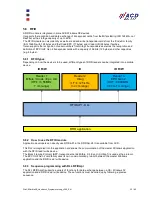
WinCEGeräteSE_Handbuch_Programmierung_v3.00_EN
23 / 65
5 Important software interfaces and device functions
This chapter outlines which software mechanisms are available in ACD devices. It also provides
programmers and system administrators with advice on what they need to know and remember to create
secure applications for ACD devices.
5.1 Startup process and autostart options
The individual sequences of the startup process are described below, focusing on the relevant startup files.
The sequence of start batches are presented below in detail:
5.1.1 ACDInit.bat
Once the Windows CE kernel has booted, the \Flashdisk\System\ACDInit.bat batch file is launched
automatically. In case the registry was previously reset at first start, the default registry settings will be
restored. Also changes in content of the four folders app, cfg, DRV and sys in the path \ Flash Disk \ System
\ Reg leads to same result. In either case the default REG-files will be imported and stored persistently in the
registry.
. If available, the update batch files UpdateCE.bat (applications) and Sysupdate.bat (system components)
are also called from ACDinit.bat.
If the ’abort startup’ key combination is pressed during booting, startup will be aborted.
5.1.2 STARTUP.BAT
\Flashdisk\System\Startup.bat contains all program calls that are initiated in the startup by the
Start
Programs
ACD
StartConfig configuration program. It also includes applications such as the VNC
server or ACDStatView used to view system information. The \flashdisk\autoapp.bat file is usually called at
the end to launch the customer application.
5.1.3 AutoApp.bat / AutoApp.exe
The \Flashdisk\AutoApp file can be called as the last entry in StartConfig. By dispensing with a file extension,
it is possible to execute a customised batch AutoApp.bat or an AutoApp.exe program when booting.
This mechanism is the interface to call specific custom autostart functions. This is why the customer is
responsible for generating the autoapp.* file and only has to copy it to \flashdisk to integrate it into the startup
mechanism.











